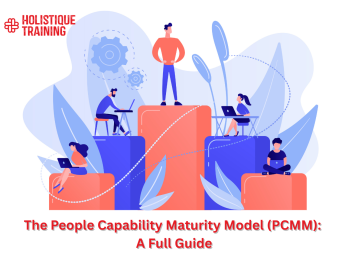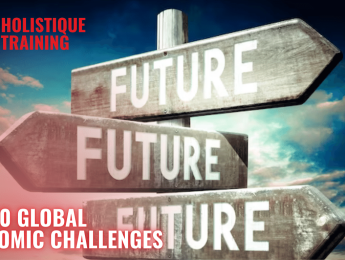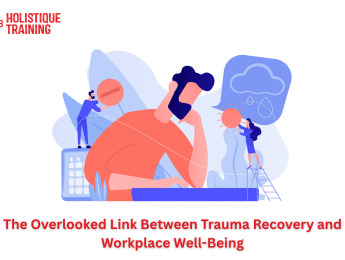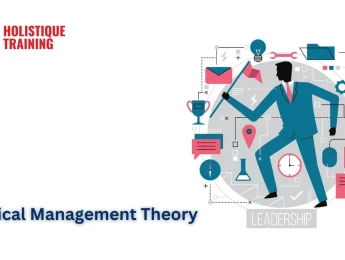- Table of Contents
- What Is Stagnation?
- Causes of Stagnation
- Lack of Innovation
- Regulatory Hurdles
- Economic Factors
- Cultural Resistance to Change
- Monopolistic Practices
- What Does Stagnation Lead to?
- Economic Decline
- Missed Opportunities
- Social Discontent
- Decline in Innovation
- Brain Drain
- How to Prevent Stagnation
- 1- Encourage Innovation
- 2- Embrace Continuous Learning
- 3- Streamline Regulations
- 4- Promote Competition
- 5- Invest in Research and Development
- Real-life Examples of Stagnation
- Stagnation vs. Stagflation vs. Recession
- Stagnation
- Stagflation
- Recession
- The Role of AI in Business Stagnation
- A. AI as a Catalyst for Innovation
- B. Resistance to AI Adoption
- C. Leveraging AI for Strategic Decision-Making
- D. AI and Workforce Dynamics
- E. AI-Driven Customer Engagement
- F Navigating Ethical Considerations
- Conclusion
In our dynamic world, where progress and growth are often celebrated, the concept of stagnation stands as a formidable challenge. Stagnation, characterised by a lack of progress, growth, or development, can have far-reaching implications for individuals, businesses, economies, and even entire societies. In this blog post, we delve deep into the intricacies of stagnation, exploring its definition, causes, consequences, and prevention strategies, while drawing insightful distinctions between stagnation, stagflation, and recession. Let's embark on a journey to understand this phenomenon that can shape the destiny of various entities.
What Is Stagnation?
Stagnation is a state of prolonged inactivity, limited progress, or a lack of growth within a system, organisation, or society. It's often marked by a sense of inertia, where the status quo persists despite external changes or opportunities for advancement. This phenomenon can manifest in various aspects of life, including economics, technology, personal development, and more.
Causes of Stagnation
The causes of stagnation can be multifaceted, often stemming from a combination of internal and external factors. These factors can vary greatly depending on the context, but some common causes include:
Lack of Innovation
Innovation serves as the lifeblood of progress, and its absence is a potent precursor to stagnation. Organisations and individuals, ensconced in the comfort of established methods, often fall prey to complacency. The failure to recognise the imperative need for adaptation and evolution can lead to a perilous state where growth becomes an elusive concept. Notably, fostering a culture that encourages experimentation, risk-taking, and the implementation of novel ideas becomes imperative in warding off the stagnation menace.
Regulatory Hurdles
Excessive regulations act as invisible barriers, impeding the natural flow of growth and innovation. In a bid to maintain control or address perceived risks, regulatory frameworks may become overly rigid, stifling entrepreneurial spirit and hindering the emergence of pioneering ideas. Striking a delicate balance between safeguarding public interests and fostering an environment conducive to business growth is paramount. Governments play a critical role in continually reassessing and adapting regulations to keep pace with the dynamic needs of a progressing society.
Economic Factors
Economic downturns, particularly recessions, cast a long shadow over progress and development. The ripple effects of reduced consumer spending, diminished business investments, and limited job opportunities create a perfect storm that can cripple sectors across the economy. Recognising the cyclical nature of economic challenges and implementing strategies to weather downturns becomes crucial. This includes fostering resilience through diversified economic activities and fortifying safety nets to mitigate the impact on individuals and businesses.
Cultural Resistance to Change
Cultural norms and societal attitudes, while often providing a sense of continuity and identity, can become formidable barriers to growth. When traditions and established practices overshadow the imperative of progress, a culture of resistance to change takes root. Addressing this requires not just a shift in mindset but a nuanced approach that respects cultural heritage while encouraging a forward-looking perspective. Initiatives to educate and create awareness about the benefits of embracing change within the cultural context can gradually erode resistance and pave the way for a more dynamic society.
Monopolistic Practices
In the realm of business, the emergence and sustenance ofmonopolies or oligopolies can foster an environment conducive to stagnation. When a single entity or a select few dominate a market, competition diminishes, and consumer choices are limited. This lack of competition can lead to a complacent attitude where the impetus for innovation wanes. Vigilant antitrust measures, aimed at promoting fair competition, are essential to break monopolistic strangleholds and stimulate a climate where businesses are compelled to innovate to stay relevant.
Each of these causes is intertwined, and their impact can be synergistic, creating a complex web that stifles growth. Recognising the interplay of these factors is crucial for developing comprehensive strategies to combat stagnation effectively. The collective efforts of individuals, organisations, and policymakers are necessary to dismantle these barriers and pave the way for sustained progress.
What Does Stagnation Lead to?
The consequences of stagnation can be profound and can affect different domains of life in various ways:
Economic Decline
Stagnation, when left unchecked, becomes a harbinger of economic decline. It manifests as reduced productivity, lower job creation, and sluggish GDP growth. The implications extend beyond financial indicators to touch the lives of citizens. A decline in economic activity translates to a lower standard of living for the population. Unemployment rates rise, and job opportunities dwindle, creating a domino effect that reverberates through communities and households. Governments and economic policymakers grapple with the challenge of rejuvenating stagnant economies to restore prosperity.
Missed Opportunities
Stagnation operates as a blindfold, preventing individuals and organisations from recognising and capitalising on emerging opportunities. The dynamic nature of markets and technologies presents a constant stream of possibilities for growth and development. However, those ensnared in stagnation are often hesitant or unable to adapt to these changes. Consequently, they miss the chance to tap into new markets, adopt cutting-edge technologies, or leverage emerging trends, resulting in a loss of competitiveness and relevance.
Social Discontent
The stagnation-induced stagnation-induced frustration is not limited to economic realms but spills over into the social fabric. A lack of progress and opportunities for improvement can foster discontent among various segments of society, particularly the younger generation. Frustration may manifest in social unrest, protests, or a general disillusionment with established systems. Recognising the social implications of stagnation is essential for policymakers and leaders to address the root causes and implement strategies that not only stimulate economic growth but also ensure social harmony.
Decline in Innovation
Innovation is the lifeblood of progress, and stagnation acts as a dampener on this vital force. When the motivation to create and improve diminishes, the development of new products, services, and solutions slows down. This decline in innovation further entrenches the cycle of stagnation, as entities become increasingly reliant on outdated methods and technologies. Breaking free from this cycle requires a concerted effort to reignite the spark of creativity, encouraging a culture that values and rewards innovation at all levels of society.
Brain Drain
In the face of stagnation, individuals seeking growth and development often look beyond their current environment. This phenomenon, known as 'brain drain,' sees talented and ambitious individuals migrate to more dynamic and progressive regions. The departure of skilled professionals further exacerbates the stagnation cycle, as the very individuals who could potentially contribute to revitalising stagnant entities take their talents elsewhere. Stemming brain drain requires not only economic reforms but also a cultural shift that makes staying and contributing locally more appealing than seeking opportunities abroad.
Understanding these multifaceted consequences is crucial for developing targeted interventions and strategies to counteract stagnation's corrosive effects. Whether through economic stimulus, social programs, or innovative policies, proactive measures can be implemented to break free from the grip of stagnation and foster a climate of sustained growth and progress.
How to Prevent Stagnation
Preventing stagnation requires a proactive approach that involves embracing change, fostering innovation, and maintaining a healthy environment for growth:
1- Encourage Innovation
Innovation stands as a formidable antidote to stagnation. Organisations must not only recognise the importance of innovation but actively cultivate a culture that values and rewards it. This involves creating environments conducive to creativity, where employees are encouraged to think outside the box. Structured brainstorming sessions, cross-functional collaboration, and dedicated Research and Development (R&D) efforts become integral components of fostering innovation. Furthermore, acknowledging and celebrating both successes and failures in the pursuit of innovative solutions cultivates a culture where risk-taking is seen as a necessary step towards progress.
2- Embrace Continuous Learning
In a world characterised by rapid change, embracing continuous learning is indispensable for individuals seeking to stave off stagnation. Committing to lifelong learning and personal development ensures that skills remain relevant in the face of evolving landscapes. This requires a shift in mindset, where learning is not confined to formal education but becomes a continuous and integral part of professional and personal growth. Employers can contribute to this by providing learning opportunities,training programs, and creating a workplace culture that values adaptability and ongoing skill development.
3- Streamline Regulations
Governments play a pivotal role in preventing stagnation by maintaining a delicate balance between necessary regulations and fostering an environment conducive to business growth. A nimble regulatory framework is essential, one that adapts to changing times and encourages rather than stifles entrepreneurship. Regular assessments of existing regulations to identify and remove unnecessary barriers can streamline processes and incentivise businesses to innovate. Collaboration between regulatory bodies and industries ensures that regulations are not only effective but also flexible enough to accommodate the dynamism of a rapidly changing global landscape.
4- Promote Competition
Healthy competition acts as a powerful deterrent to stagnation. It prevents the development of monopolistic tendencies, encourages diversification, and stimulates ongoing improvements. Policymakers should actively promote and protect fair competition, breaking down barriers that impede new entrants and fostering an environment where market forces drive innovation. This involves robust antitrust measures, ensuring that no single entity or a select few hold disproportionate power in a given industry. Additionally, creating platforms that facilitate collaboration among businesses can lead to synergies and innovation that benefit the entire ecosystem.
5- Invest in Research and Development
Both the public and private sectors should prioritise and allocate resources to Research and Development (R&D). Investing in R&D not only drives technological advancements but also fosters an environment of constant improvement. Governments can incentivise private enterprises to invest in R&D through tax breaks and grants. Similarly, private entities can establish dedicated R&D departments and collaborate with academic institutions to push the boundaries of knowledge and innovation. A commitment to R&D ensures that entities stay at the forefront of technological advancements, positioning themselves as leaders rather than followers in their respective fields.
Realising these preventive measures requires a concerted effort from individuals, businesses, and policymakers. It necessitates a shift in mindset, organisational culture, and regulatory frameworks towards fostering an environment that values dynamism, creativity, and continuous improvement. By actively embracing these strategies, entities can not only avoid the pitfalls of stagnation but also pave the way for a future characterised by sustained growth and innovation.
Table 1: Metrics to Measure the Effectiveness of Your Anti-Stagnation Efforts
Metrics | Description |
Innovation Index | Quantifying success in fostering creative solutions. |
Regulatory Compliance | Assessing adherence to regulations while fostering growth. |
Economic Resilience | Measuring the ability to withstand and recover from downturns. |
Cultural Adaptability | Evaluating the openness to change within the organisation. |
Market Competitiveness | Gauging effectiveness in competition and industry positioning. |
Real-life Examples of Stagnation
Stagnation has historically affected various entities. Take the example of "Blockbuster," a once-dominant video rental company. Despite the emergence of online streaming, Blockbuster clung to its traditional rental model and failed to adapt. The result? Stagnation and eventual bankruptcy, while competitors embracing digital innovation flourished.
In the tech industry, the "Nokia" case is instructive. Nokia, once a global leader in mobile phones, struggled to pivot from basic phones to smartphones, leading to a loss of market share and relevance. Their inability to innovate and adapt reflected a classic case of corporate stagnation.
Stagnation vs. Stagflation vs. Recession
It's crucial to differentiate between stagnation, stagflation, and recession, as they represent distinct economic scenarios:
Stagnation
Stagnation refers to a prolonged lack of growth and development across various sectors of an entity, organisation, or economy. It is characterised by a persistent state of inactivity, where progress remains elusive despite external changes and opportunities. Stagnation can affect multiple facets of life, from economic indicators to societal structures, creating a sense of inertia that hampers overall advancement.
Stagflation
Stagflation is a unique economic phenomenon characterised by the coexistence of stagnant growth, high unemployment, and inflation. This perplexing scenario challenges conventional economic theories, as inflation and unemployment are traditionally believed to have an inverse relationship. Stagflation presents a complex challenge for policymakers, requiring nuanced strategies to address both stagnant economic growth and rising inflation simultaneously. This economic conundrum, while rare, demands careful consideration of factors contributing to the dual pressures of unemployment and inflation.
Recession
A recession represents a significant decline in economic activity across the entire economy. This downturn is marked by reduced Gross Domestic Product (GDP) growth, increased unemployment rates, and decreased consumer spending. Unlike stagnation, which may persist without a significant decline in economic indicators, a recession is a more acute phase of economic contraction. Governments and central banks often deploy various fiscal and monetary measures to counteract the effects of a recession, aiming to stimulate economic activity and restore stability.
Understanding the distinctions between stagnation, stagflation, and recession is essential for policymakers, economists, and individuals navigating the complexities of economic dynamics. While stagnation represents a prolonged state of inactivity and lack of growth, stagflation introduces the challenge of simultaneously addressing stagnant growth and rising inflation. On the other hand, a recession is characterised by a more pronounced decline in economic activity, requiring targeted interventions to spur recovery. Each of these economic scenarios necessitates tailored strategies, underlining the importance of nuanced economic analysis and policy implementation.
The Role of AI in Business Stagnation
As we navigate the complexities of preventing stagnation, it's crucial to shed light on the evolving landscape of technology, particularly the role of Artificial Intelligence (AI) and its potential impact on business dynamics.
A. AI as a Catalyst for Innovation
Artificial Intelligence has emerged as a transformative force, promising unprecedented levels of efficiency and innovation across industries. However, paradoxically, the misuse or underutilisation of AI can contribute to business stagnation. Organisations that fail to recognise and harness the potential of AI in optimising processes, automating routine tasks, and gaining valuable insights from vast datasets risk falling behind competitors who embrace these technological advancements.
B. Resistance to AI Adoption
Stagnation can be fueled by a reluctance or hesitancy to adopt AI technologies. Some businesses may resist integrating AI into their operations due to concerns about job displacement, data security, or simply a lack of understanding about the benefits of AI. This resistance creates a divide between technologically advanced businesses and those clinging to traditional methods, ultimately hindering overall industry progression.
C. Leveraging AI for Strategic Decision-Making
One of the hallmarks of successful businesses is the ability to make data-driven, strategic decisions. AI, with its ability to analyse vast amounts of data and derive actionable insights, can play a pivotal role in this regard. Organisations that neglect AI-driven analytics may find themselves handicapped in the face of dynamic market conditions, missing opportunities for growth and optimisation.
D. AI and Workforce Dynamics
The integration of AI technologies can lead to shifts in workforce dynamics. While some routine tasks may be automated, AI also opens new avenues for creativity, innovation, and more complexproblem-solving tasks. Businesses that view AI solely as a threat to jobs without recognising its potential to enhance productivity and create new roles risk stagnation in both technological advancement and workforce development.
E. AI-Driven Customer Engagement
Customer expectations are evolving in tandem with technological advancements.AI-driven tools, such as chatbots, personalised recommendations, and predictive analytics, are becoming integral to delivering exceptional customer experiences. Businesses that lag in adopting these AI-driven customer engagement strategies risk losing their competitive edge and may find it challenging to adapt to evolving consumer preferences.
F Navigating Ethical Considerations
The ethical use of AI is a critical consideration in preventing stagnation. Businesses must navigate the ethical dimensions of AI, ensuring transparency, fairness, and accountability in their AI systems. Failure to address ethical concerns, such as bias in AI algorithms or the responsible handling of customer data, can lead to reputational damage, legal challenges, and, ultimately, business stagnation.
In short, while AI presents unparalleled opportunities for innovation, its role in business stagnation cannot be ignored. Businesses must strike a delicate balance, embracing AI technologies while addressing concerns related to workforce displacement, ethical considerations, and the potential for creating a technological divide. Recognising AI as a tool for growth rather than a threat to stability is essential for businesses to remain agile and competitive in an increasingly AI-driven world. The strategic integration of AI can be a key factor in propelling businesses beyond the shackles of stagnation and into a realm of sustained advancement.
Conclusion
Stagnation presents a formidable challenge that can hinder progress, growth, and development across various domains. By understanding its causes, consequences, and prevention strategies, individuals, organisations, and societies can proactively work towards avoiding the pitfalls of inaction. Embracing innovation, adaptability, and continuous learning are key to breaking free from the clutches of stagnation and ushering in a brighter, more dynamic future.
Embark on a transformative journey with our ‘In-Depth Business Development Professional Training’ course, designed to equip individuals and organisations with the tools to conquer stagnation. Learn the art of fostering growth, embracing innovation, and navigating the dynamic business landscape. By enrolling in this course, you'll not only understand the challenges posed by stagnation but also become a catalyst for positive change. Join us in unlocking a future where stagnation is not an obstacle, but a challenge confidently overcome. Enrol today and be the driving force for a brighter and more dynamic tomorrow.























